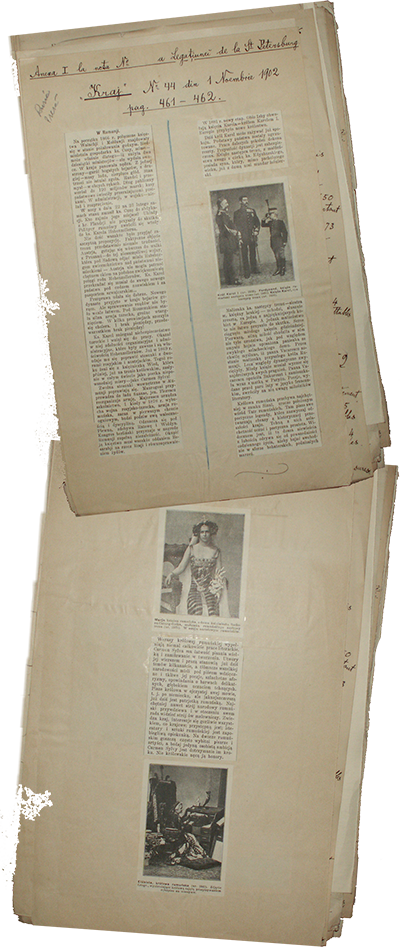Project presentation
Synopsis
The “Russian Other” played a constitutive role in the shaping of modern Romanian nationalism. The peculiarities of the emerging Romanian national narrative derived as much from the shifting attitudes toward “Otherness” as from the perceived features of the collective “Others.” The importance of this analytical framework can be linked to the overlapping “symbolic geographies” of the ideal “homeland” constantly imagined (and re-imagined) by the Romanian intellectuals of the last two centuries. During the early period of nation-building (before 1914) the fusion of intellectual and political activities in the case of a large part of the Romanian elites lent additional immediacy to such mental constructs. It appears that further research along these lines, even if past its prime in Western scholarship, would still be welcome in the Romanian context. One of the most articulate manifestoes for the “establishment of a new research object of symbolic geographies” in Romanian studies was recently issued by the innovative Cluj-based historian Sorin Mitu. Though hailing from the tradition of “imagology” and the history of mentalities, the Romanian author insisted on the broader application of this model to topics in political and intellectual history. This has been partly accomplished already in the research of Sorin Antohi and younger Romanian-born scholars, such as Marius Turda. The foreign ideological models represented not only discrete instances of cultural transfer, but shaped and constituted the underlying frames of the national discourse. Antohi, for example, convincingly showed that the autochthonist canon constructed the discourse of Romanian specificity from imported ideological elements.

In contrast to the ambiguous position of the Balkans on the Romanian “mental maps”, the Habsburg and, especially, the Russian Empires represented quintessential sources of alienation and threat. In this sense, the importance of 1848 as a “symbolic threshold” cannot be ignored. Aside from the affiliation of the Romanian “revolutionaries” to the liberal nationalist Mazzinian tradition (that perceived the Romanov Empire as the main obstacle to the attainment of universal freedom), the Russian military intervention of that year and the Crimean War marked successive stages of the emergence of a negative image of the Russian polity. An interesting, if incomplete, study dealing with “Russia’s image in Romanian literature”, following the model of “imagology” and tracing different instances of Russia’s perception by the Romanian literary tradition between the 1840s and 1948 belongs to the literary scholar Leonte Ivanov. The “Bessarabian question” added to the anti-Russian thrust of the incipient Romanian public discourse. The “otherness” of the Russian space was rhetorically enhanced by the Romanian partaking in the Western tradition of Russophobia. Thus, Romania’s imagined belonging to the Latin (and civilized) West, combined with the persistent myth of Russian expansionism, provided the conceptual grid and the rhetorical arsenal that was later displayed in the symbolic competition over the contested territory of Bessarabia. However, even if the Russian Empire was construed as a “menacing Other,” the impact of certain ideas derived from the Russian intellectual milieu remained significant. This is to point not so much to the Russian model of “Westernization,” explicitly rejected or discarded by the Romanian elites by the 1860s, as to the Russian ideological impact on certain Romanian thinkers or ‘national activists’ (such as, e.g., B.P. Hasdeu or C. Stere).
Methodology
The project will be based on a combination of the theoretical insights developed in the field of ‘symbolic geography’ with specific methods characteristic for the broadly defined „intellectual history” approach. The defining features of the Russian and Romanian cases stemmed from the ‘triangular relationship’ established between the elites of these peripheral actors of the European state system and the mainstream Western ‘model’ that became increasingly fragmented in the second half of the 19th century. Despite the relative infrequency of official contacts and the growing atmosphere of mutual suspicion following the Russian-Romanian diplomatic conflict of 1878, mutual borrowings and occasional cultural transfers did not cease completely. The Pan-Slavist discourse remained dominant in the Russian case, but it gradually came under attack from other visions of space and hegemony (some of them proto-geopolitical) which operated on the symbolic level as well. The perceptions of the Romanian state and people remained entangled within the broader framework of the ‘Eastern Question,’ but gradually acquired separate significance. This was to be amply confirmed during the 1914-16 Russian-Romanian negotiations, when issues of practical politics combined with the salience of mutual stereotypes, ‘Orientalist’ clichés (on both sides) and previously unarticulated grievances to produce a more complete (but constantly shifting) image of the Romanian Kingdom on the Russian ‘mental maps.’ One of the major aims of the project will be to identify and disentangle the different layers of the Russian public discourse concerning Romania before and during World War I.
Objectives
The project envisages the following main goals: 1) Collecting the relevant source materials referring to the visions, images, attitudes and symbolic constructs that structured the perceptions of the Russian official discourse and public opinion towards Romanian society during the late 19th and early 20th century; 2) Placing the Romanian case into the broader European context through identifying the main tropes and topics of the Russian position and focusing on the underlying ambiguity of the process of mutual perception; 3) Assessing the interaction between official diplomacy and public opinion in the Russian case; 4) Emphasizing the important transformations in the symbolic sphere and the field of practical policy brought about by World War I in the Russian and the Romanian cases; 5) Correlating the perception of the Romanian state and society articulated by the Russian observers with the corresponding Romanian positions; 6) Evaluating the role of Bessarabian-born émigrés in the Romanian Kingdom as ‘cultural intermediaries’ between the Russian and Romanian public sphere; 7) Undertaking a parallel analysis of the scholarly discourse, official pronouncements and the widely publicized views promoted by the press, with the aim of uncovering the enduring and specific features of the different levels of the construction of ‘otherness’ in the Russian public discourse vis-à-vis Romania